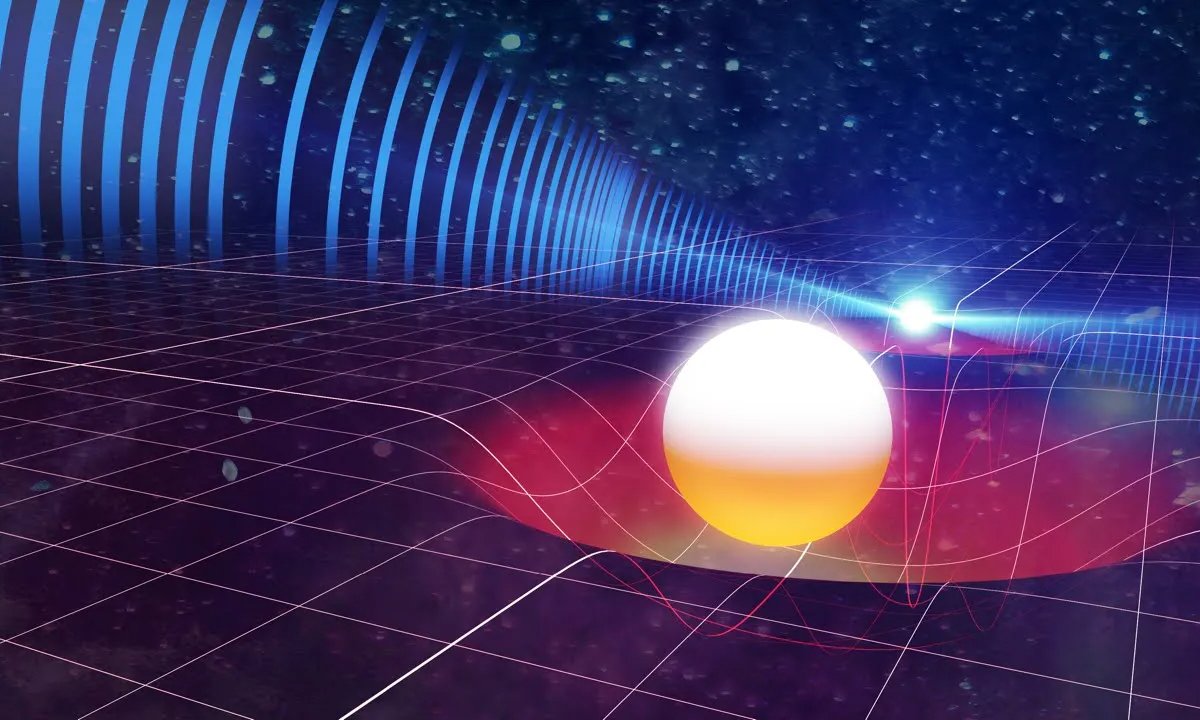In a recent article in The Conversation, Daniel Reardon, a pulsar timing and gravitational wave postdoctoral researcher at Swinburne University of Technology in Australia, reported the results of a nearly impossible task: weigh a neutron star.
The goal of the experiment is to help NASA teams understand what happens when matter inside these extreme space objects reaches the brink of collapse. So knowing the precise mass of one of them would allow us to not only assess how matter is compressed into situations unimaginable on Earth, but also to learn about the physics that governs this extreme density.
After all, a neutron star is what remains of a massive star (greater than eight solar masses) after a supernova explosion. This collapsed core It is naturally much heavier than our Sun, but it is compressed into a sphere the size of an Earth city..
Understanding how a neutron star works
The research, presented during the National Astronomy Meeting organised by the Royal Astronomical Society (RAS) at the University of Hull last month, revealed the workings of the Circinus X-1 binary system. This is a neutron star that is stealing material from a companion star in its orbit..
But this material is not immediately “consumed.” Some of it is removed from the system in the form of powerful jets, according to the researchers. The oscillation or precession they produce is very similar to the intermittent movement of a garden sprinkler, the researchers say.
Observed by the powerful MeerKAT radio telescope in South Africa, Circinus X-1’s jet is moving at speeds close to the speed of light. According to astronomers, it is slamming into the gas and dust material surrounding the system, creating termination shocks that cause these high-energy particles to slow down suddenly.
After all, what’s inside a neutron star?
The interior of a neutron star is extremely dense, exceeding even the density of an atomic nucleus.. The matter of the original star, the densest and most stable form of matter known in the universe that has not yet turned into a black hole, is compressed so much by its intense gravity that protons and electrons combine to form neutrons.
To map hotspots and determine the mass and size of neutron stars, NASA’s Neutron Star Internal Composition Explorer (NICER) radio telescope on the International Space Station detects x-rays from million-degree hot spots on the surfaces of these extreme objects.
The hope is that if they can understand Relationship between mass and radius of neutron starsScientists can determine the so-called equation of state (EoS) of condensed matter in their cores. A softer EoS indicates exotic particle disintegration. A hard EoS indicates the continued existence of neutrons.
How big and heavy is a neutron star?
To solve the mystery, scientists worked with a neutron star called PSR J0437-4715. The brightest and millisecond-closest pulsar to Earth. The pulsar has become one of NICER’s main targets, along with being studied for almost 30 years with the iconic Murriyang radio telescope of the Australian national scientific research agency CSIRO.
Working with this object that rotates 173 times per second, Reardon and his colleagues calculated its mass to be 1.42 times the mass of our Sun.can become the typical parameter of a neutron star.
NICER scientists were thus able to determine the geometry of the x-ray hotspots and calculate that the radius of the neutron star is 11.4 kilometers.
Follow the latest developments in physics and science on TecMundo. Or take the opportunity to learn whether every sun is a star.
Source: Tec Mundo
I’m Blaine Morgan, an experienced journalist and writer with over 8 years of experience in the tech industry. My expertise lies in writing about technology news and trends, covering everything from cutting-edge gadgets to emerging software developments. I’ve written for several leading publications including Gadget Onus where I am an author.













